Unlike many of the other Wildlife Photographer of the Year images, the animals in Karine Aigner’s portfolio are all dead. However hard these pictures are to look at, the photojournalist doesn’t want people to turn away.
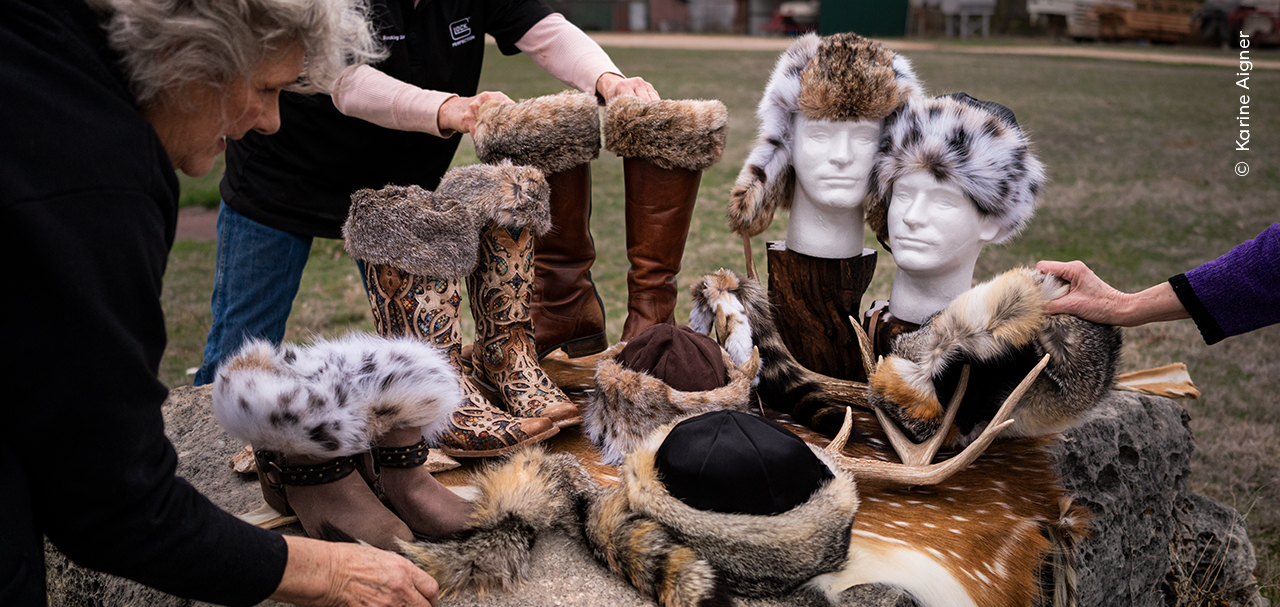
Fur Fashion © Karine Aigner. Winner of the Wildlife Photographer of the Year 59 Photojournalist Story Award
Over a 23-hour period, bobcats arrive at the West Texas Big Bobcat Contest. They’re dragged along the floor by hunters, who show their permits and prove they’ve met the additional requirement of also killing five either coyotes or grey foxes. As the bobcats are placed on the scales, the hunters wait with bated breath hoping for the jackpot.
Upon entering the arena, the cats are checked with a metal detector to make sure weights haven’t been inserted into them. Wet cats are also banned to stop water being forced into them to add weight post death. Karine follows the predators, tracking their posthumous journeys.
The Texas contest is just one. Killing contests are part of the landscape for bobcats and other predators in areas of the USA. In these select places people win big money to shoot the biggest or most animals in a practice that is legal in more than 40 states. Understanding predators’ lives means seeing this piece of the puzzle.
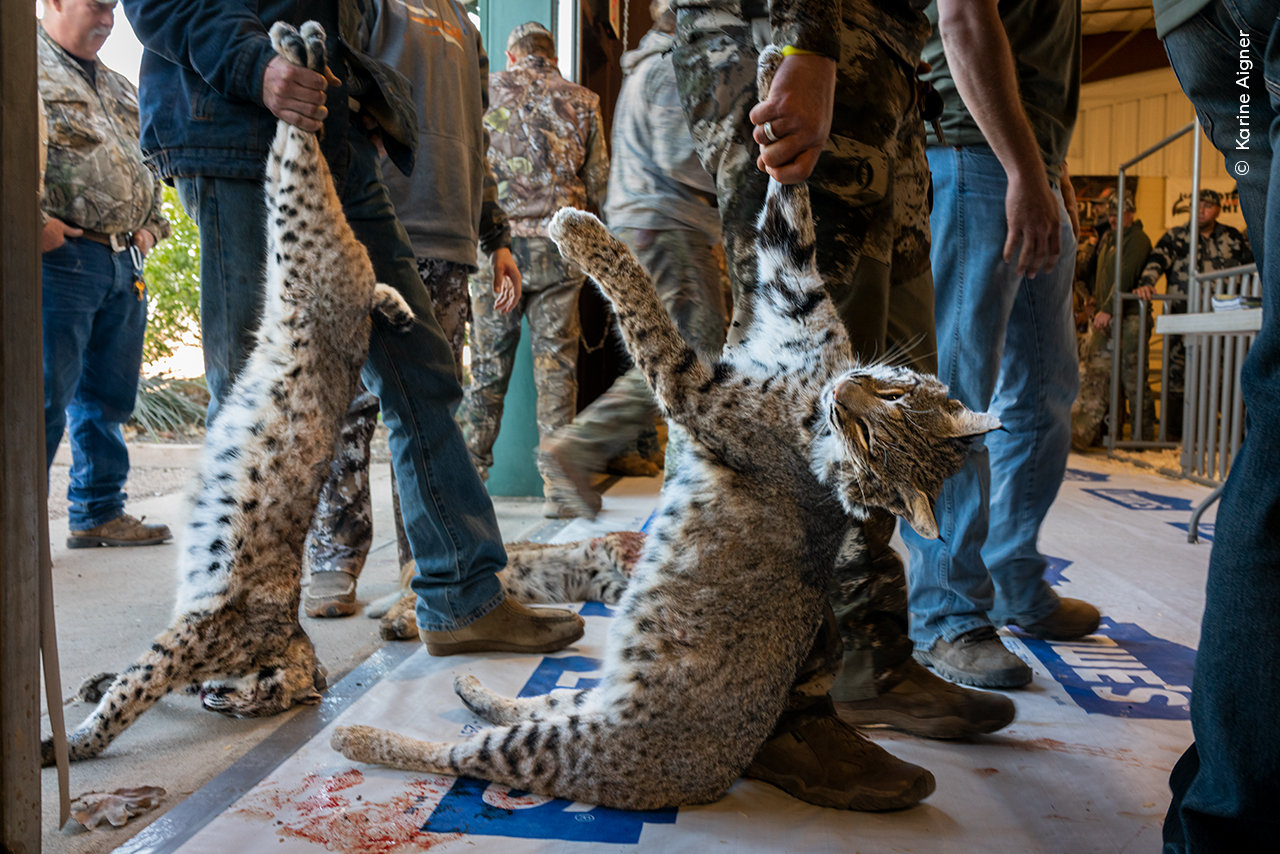
Big Business © Karine Aigner. Winner of the Wildlife Photographer of the Year 59 Photojournalist Story Award.
Karine’s relationship with bobcats, however, began well before she started photographing the contests. It all started with one chance encounter in 2017.
“Bobcats are considered a ghost cat, you don’t see them,” Karine says, giving context about these shy felines as she remembers back to her experience all those years ago.
Arriving in Texas a couple of days before she was due to teach her photography workshops, Karine took her camera down to the pond near the house she was staying in to see what she could spot.
“A bobcat shows up, and I’ve never seen a bobcat in all the years I’ve been in Texas,” she remarks, describing how she pulled out her camera to photograph the cat across the water.
“She knows I’m here. Clearly, I’m gonna go closer. So, I go closer, and I go closer and closer… and I get so close to her that I can’t shoot anymore with the 600. I’m almost too close to photograph,” she says, describing the endorphins she felt in this rare moment.
Inspired by this brief interaction, a few days later Karine dressed up in camouflage and draped a net between chairs, hoping to catch a glimpse of the female bobcat that she had known for several years was denning under the house, although she hadn't paid close attention until that summer.
Until the pond encounter, Karine had thought photographing the cats would be impossible. After several hours, the cat came out, together with a kitten. She drank from the water bowl which is always left out for wildlife and looked straight down Karine's lens.
“That was the beginning of an entire summer where I cancelled all my plans. I stayed there, and I photographed Momcat (the name given to this female bobcat) and her kids. Then the year after, she came back again,” Karine says, who doesn’t shy away from calling this a relationship.
Discovering bobcat killing contests
When Karine tried to dive into bobcat research, she came up short. She found only basic facts, and nothing about the animals’ varying personalities. Then she discovered the killing contests that happen across the USA, the largest being in Texas.
This was Karine’s entry into documenting killing contests and she started by visiting a few in Texas on her own. From here, she covered the story of a coyote killing contest in New York for National Geographic. She then took herself to the Sweetwater Rattlesnake Round-Up, where snakes are brought in live and visitors pay to behead and skin them. She followed her curiosity.
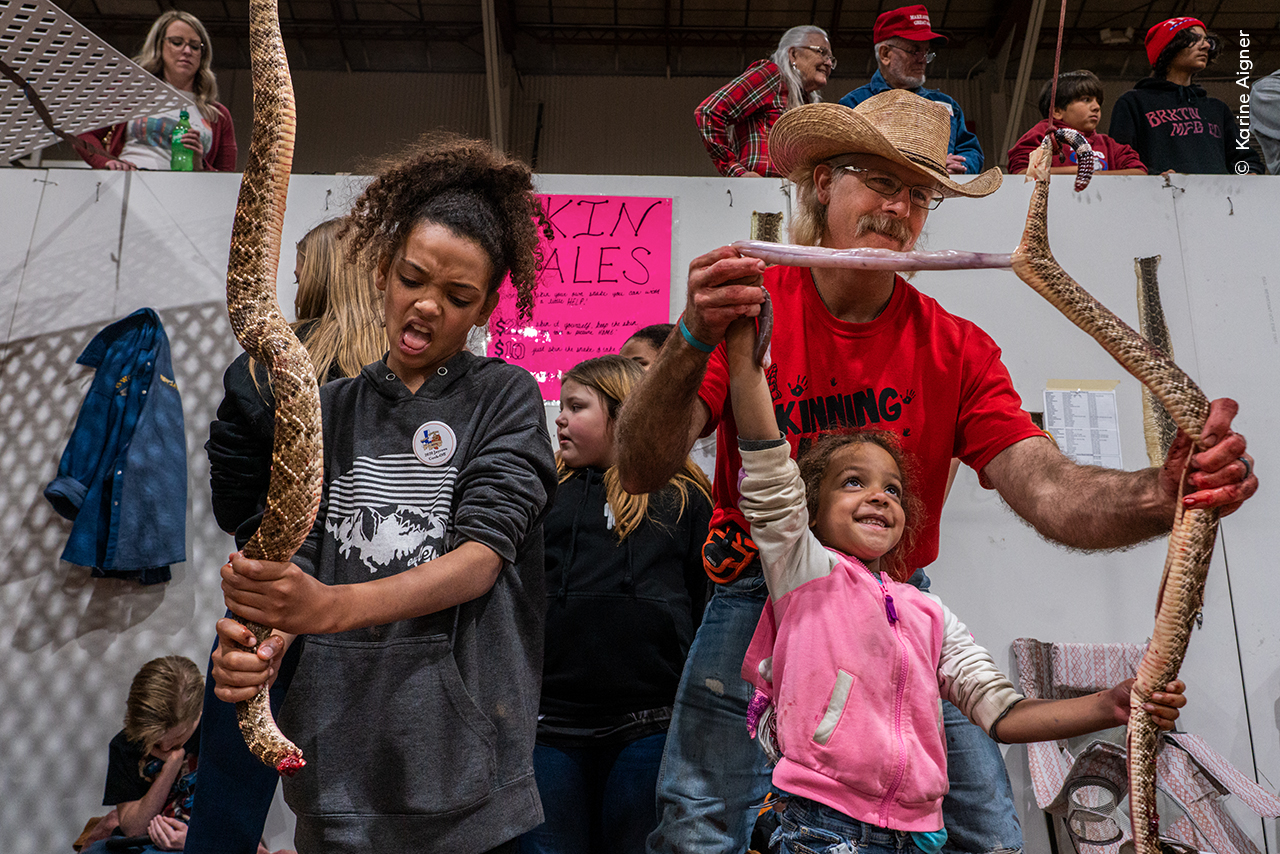
A Family Festival © Karine Aigner. Winner of the Wildlife Photographer of the Year 59 Photojournalist Story Award.
“And so that began this little adventure or insight into hell for predators in the United States,” she says.
Karine notes how the hunters “have an idea that they’re helping ranchers keep predator numbers down. Sure, we can win some money, but hey, why not participate because we like to hunt, and it also helps ranchers.”
But, she explains, the science shows that killing predators doesn’t keep their numbers down, which people don’t necessarily want to believe. The science doesn’t match up with the goal of eliminating predators on the landscape. The American audience, she says, is also fearful.
“It’s difficult to generalise across different populations, but it appears that the legal hunting pressure alone appears to have little effect on population size, therefore there’s no justification or validity to the argument,” says Louise Tomsett, Senior Curator of Mammals at London’s Natural History Museum. She explains that older bobcats are more likely to be killed by hunters, which means younger cats make up more of the population. When the bobcat numbers are reduced, more territory and prey is suddenly up for grabs. Those younger cats, where possible, will repopulate.
With this in mind, is there any justification for the contests? Karine would struggle to say that there is.
“It would be stupid of me to say that they’re wrong or right because I can only go on my personal experience with the bobcats,” Karine remarks. “I’m not a rancher, so I don’t know how many sheep someone’s lost to predators.”
Plenty of people have asked Karine how she has the emotional resilience to take these photos. Before going in, she thought it might break her. But it didn’t.
“Not that I didn’t care, not that I wasn’t completely horrified at what I was looking at,” she says.
“My mother once asked me, ‘why do you photograph this horrible stuff?’ And I thought, if I’m not going to do it and I’m not going to look at it, how am I going to get anybody else to look at it?” Karine exclaims. “If all we’re going to look at is rainbows and butterflies, we’re never going to know what else is happening in the world.”
Where other people might struggle to face this task, Karine believes she can because of her drive to tell the stories of these animals’ lives. She wants to understand the reality for bobcats and other predators in the landscape of the USA, so she can share it with others.
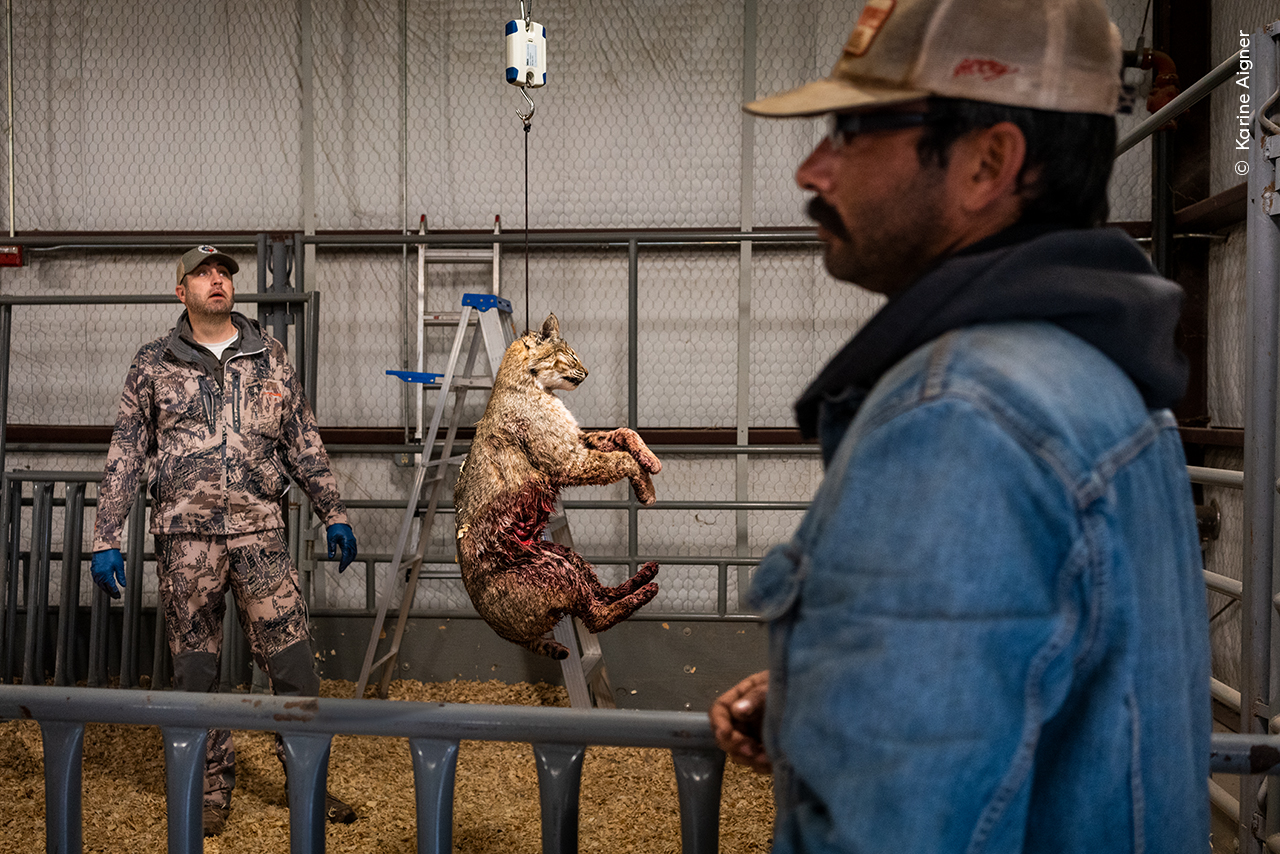
Dead Weight © Karine Aigner. Winner of the Wildlife Photographer of the Year 59 Photojournalist Story Award.
Understanding bobcats
“An overarching challenge is that bobcats are perceived to be invulnerable to various pressures,” Louise explains. “No population is inexhaustible to unregulated hunting harvests, even when the species appears to be as resilient as the bobcat.”
She remarks that while bobcats are not currently threatened with extinction, they could be at risk if not closely monitored. “Most challenges are human induced, however, it can be difficult to separate them from the natural pressures, particularly as human activities also have an increasing influence on natural events.”
As well as threats from hunting, bobcats are at risk from poisoning, including when they eat rodents that have consumed poisonous rodenticide. They’re also impacted by habitat loss, disease from domestic animals, variation in weather and predation by wolves and coyotes. Suitable habitat and available prey are key to their population size.
In practice, Karine says the people she meets at contests are always very pleasant. Those entering the contests are doing nothing illegal. Whether the contests are ethical, depends on who you ask.
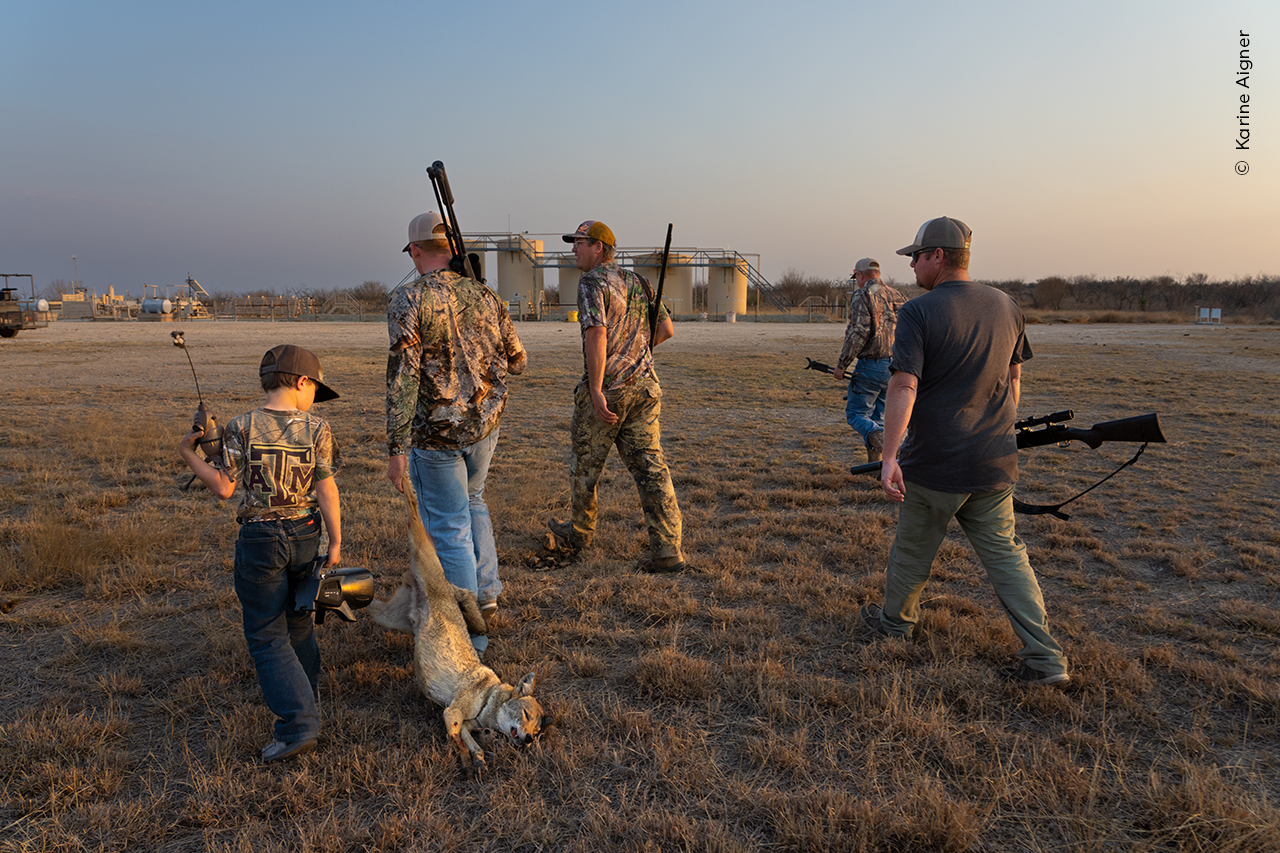
A Social Event © Karine Aigner. Winner of the Wildlife Photographer of the Year 59 Photojournalist Story Award.
“My goal in the work was really just to present what’s happening and not be the judge and the jury,” Karine notes.
Her biggest challenge is getting access to the hunting competitions and that’s all about trust. Giving her opinion won’t go any way towards gaining her access. She’s faced questions about whether she’s from PETA, but for the most part her presence at contests has been completely accepted.
The power of photography
Once her images hit the walls of London’s Natural History Museum, Karine suddenly received a flurry of messages about her pictures. People who’d seen the exhibition reached her through Instagram, saying they didn’t know the competitions happened.
“If my goal is to share what’s happening in the world with the world, then London’s Natural History Museum is a great place for the work,” Karine says. “If people don’t like what is happening or if it bothers them, they can now go back and look for more information.”
She hopes Americans in particular will look at what’s happening in their own states. She doubts many even know that their tax dollars are going towards paying for a federal agency whose only mission is to kill predators, in a country where wildlife belongs to everyone.
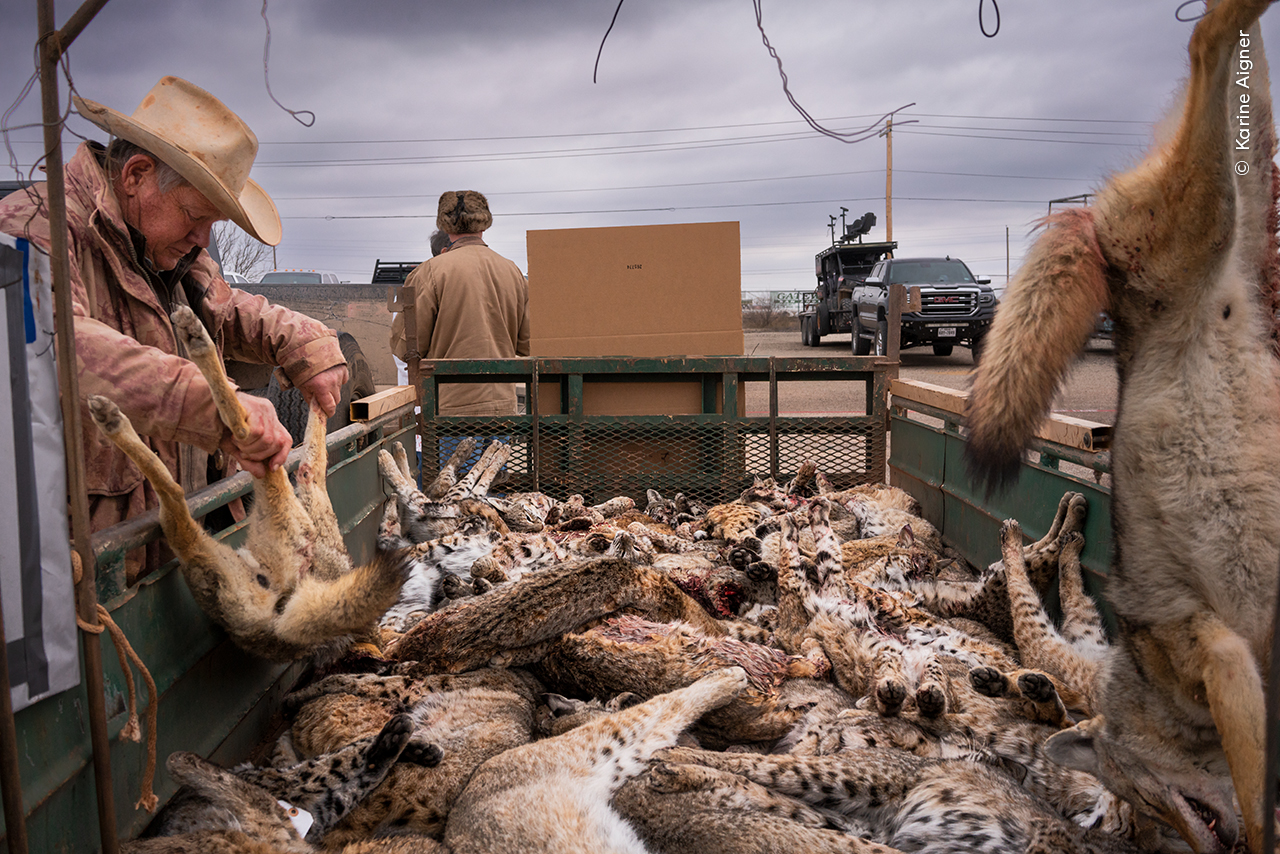
A Furrier's Haul © Karine Aigner. Winner of the Wildlife Photographer of the Year 59 Photojournalist Story Award.
“Bobcats are key top predators and as with every species they’re an essential component of the ecosystem in which they exist. Their presence, or absence, has a knock-on effect on the rest of this system,” Louise says. Bobcats not only keep down rabbit and hare numbers they also prey on rodents. Without that balance, those animals can damage crops and cause overgrazing on grasslands used for livestock, which in turn can lead to soil erosion and biodiversity decline.
“Although such images are not pleasant to observe, they’re essential to illustrate the ongoing impact of humans on species, ecosystems and the planet as a whole,” Louise comments of Karine’s photos. “We need to move away from the perceived ‘vermin’ status of certain species and think of the bigger picture where every species plays an important role in the balance of the ecosystem and the Earth as a whole.”
In her pictures, Karine isn’t giving answers, and she isn’t giving opinions. But she is hoping to drive curiosity, which in turn might create a thirst for knowledge and maybe even action.
“The audience will decide the message,” Karine reflects.
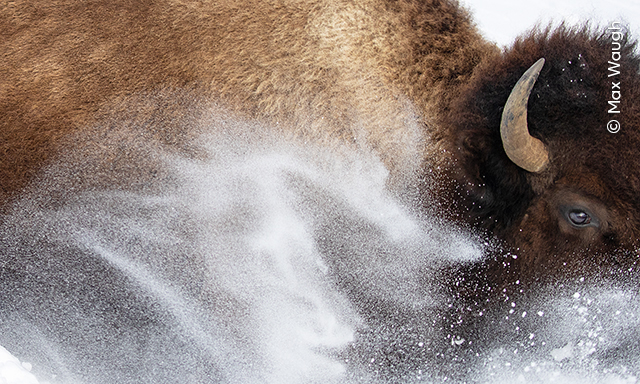
Discover stories from the wild
Get beyond the camera and discover the stories behind some of the best nature photography in the world.
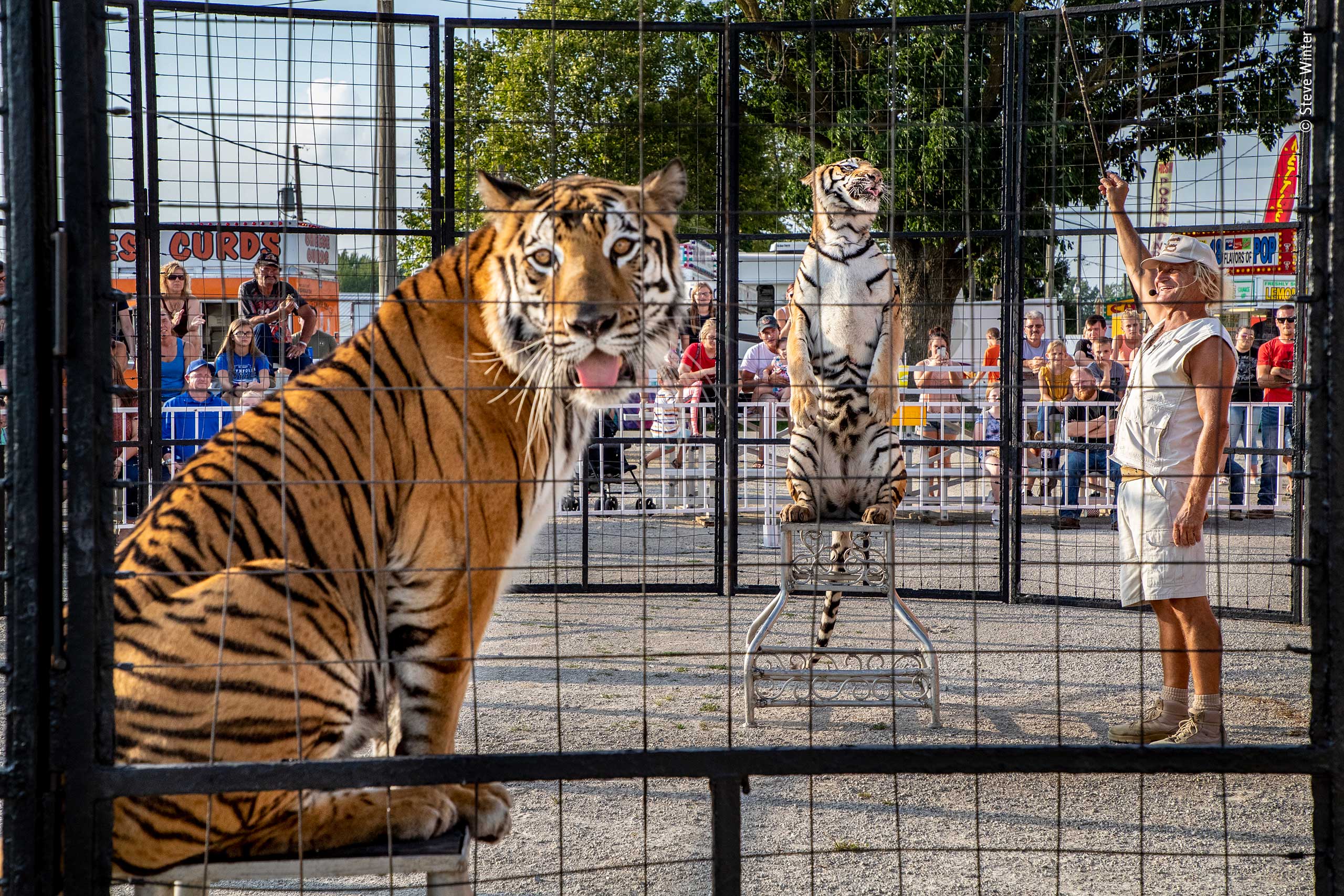
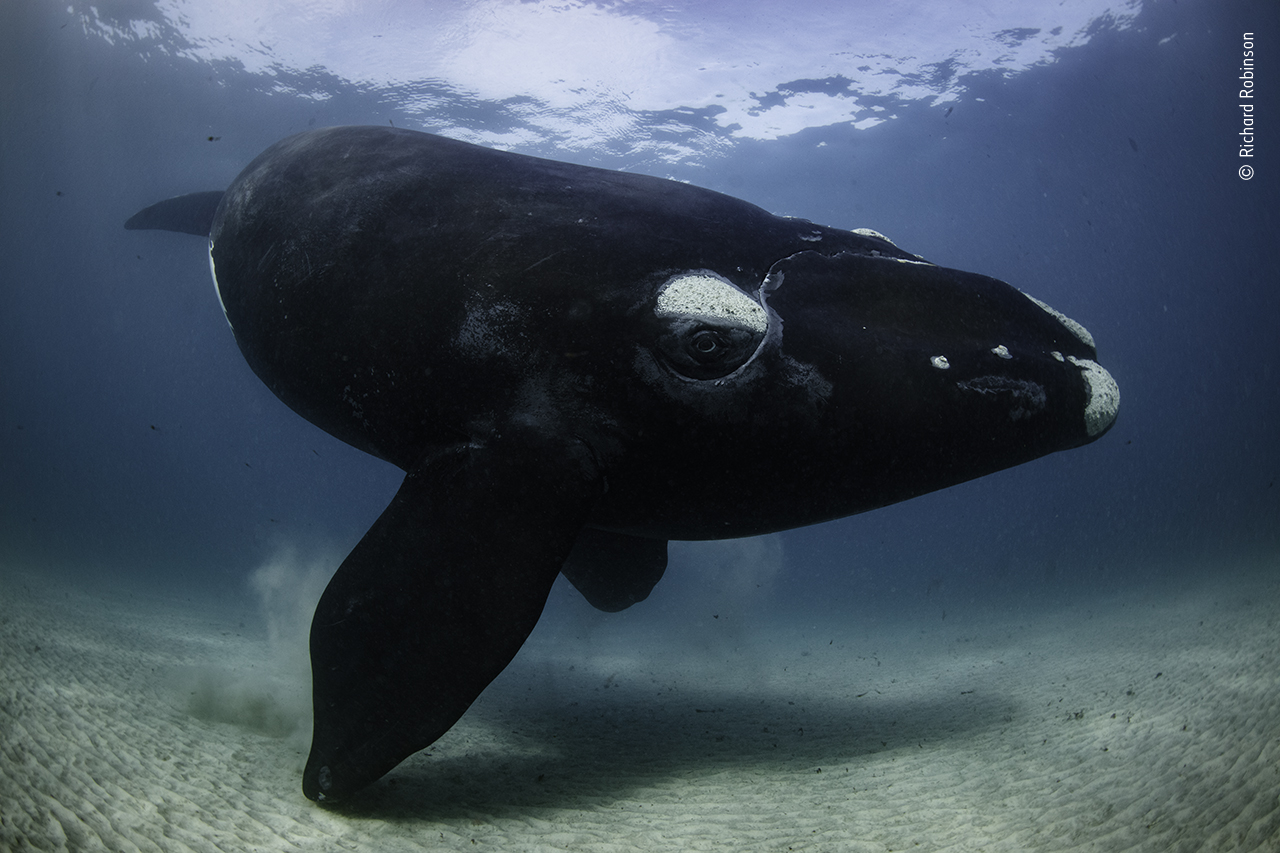
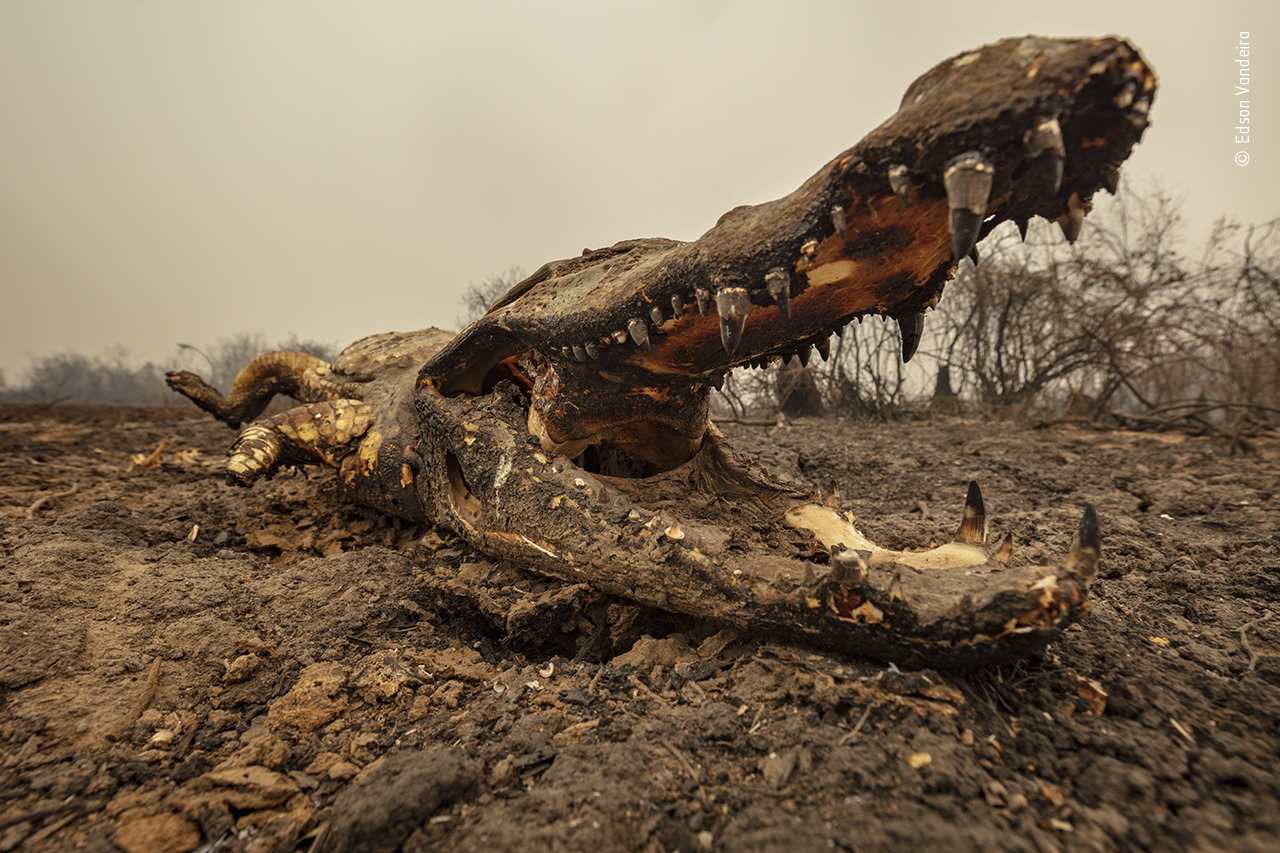
Don't miss a thing
Receive email updates about our news, science, exhibitions, events, products, services and fundraising activities. We may occasionally include third-party content from our corporate partners and other museums. We will not share your personal details with these third parties. You must be over the age of 13. Privacy notice.
Follow us on social media